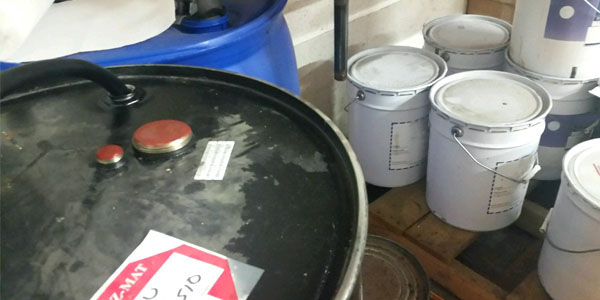
The job isn't done until the remaining spray foam material and/or empty drums are properly disposed of. A main source of information that should always be available to personnel is the SDS (Safety Data Sheets) also referred to as MSDS (Manufacturer's Safety Data Sheet). It is important to clarify that the SDS sheets used to be called the MSDS. They are now called SDS; however, products that are a few years old may still have an associated MSDS sheet. The SDS refers to the international form of the Material Safety Data Sheet. This is to ensure that the information is standardized and universal in order to reduce the confusion of compliance for everyone on the planet. The SDS sheets should always be kept in a safe location where they can readily be obtained by personnel as needed. These sheets contain information about the chemical composition of the spray foam material as well as its safe handling, disposal and emergency information.
Agencies and Organizations Involved With Hazardous Waste:
The EPA (Environmental Protection Agency) also has regulations governing the proper disposal of hazardous materials that include recordkeeping and emergency preparedness. Different states and localities may also have additional requirements. OSHA (Occupational Safety and Health Administration) has regulation standards concerning the treatment, handling, and disposal of hazardous waste. The RCRA (Resource Conservation and Recovery Act) is the principal federal law in the U.S. that governs the disposal of hazardous waste. The RCRA considers a substance to be hazardous if it is ignitable, corrosive, reactive, or its extraction procedure is toxic. The American Chemistry Council: Center for Polyurethanes Industry offers guidelines for storing and handling spray foam materials, as well as the disposal of wastes and containers from polyurethane processing. The American Chemistry Council offers training in the above mentioned areas. The DOT (Department of Transportation) has regulations for transporting chemicals. These regulations may vary from state to state.
Hazardous Versus Non-Hazardous Waste:
It is crucial to understand the difference between hazardous and non-hazardous spray foam material. Cured (solid) spray foam can be considered non-hazardous. If this is the case, then it can be disposed of in a non-hazardous manner. The EPA maintains detailed information on over 500 specific materials that are considered to be hazardous, including their identifying characteristics, health hazard, ecological impact, and methods of reducing chemical exposure. Hazardous materials contain constituents that have been determined, by governing agencies, to be harmful to human health and the environment. According to HC Fennel Consulting, LLC Applied Foam Technologies and Commissioning (2016), “…in compliance with the testing methods in the EPA’s Code of Federal Regulations (CFR) for the Protection of the Environment, 40 CFR Part 261, neither the “A” side or “B” side, nor any foam products, would typically be expected to possess the characteristics of a hazardous waste when disposed of in its original purchased form, pMDI [Polymeric Methylene Diphenyl Diisocyanate] is not a listed hazardous waste under RCRA. States and localities may have additional requirements, so contractors should check and understand federal, state, and local requirements before proceeding with disposal of un-reacted waste components.
Disposal of Empty or Partially Empty Drum Containers:
In general, the components of SPF are not considered to be hazardous. The disposal of any remaining materials should be addressed by following the manufacturer's safety data sheet.
- Wear the proper PPE ( Personal Protective Equipment).
- Make sure the drum is empty before its disposal.
- Some residue may still be present, so take all precautions
- Contact a licensed drum recycler, professional scrap metal recycler, or an approved landfill. The product manufacturer may have information on additional resources
- Never re-use drums that have been professionally cleaned or reconditioned.
- Do not cut the used drums with a torch, use a welder or heat the drum as toxic vapors may escape.
Responding to a Spill:
To avoid accidental spills, always keep spray foam material containers tightly sealed except when they are in use. The following are the steps one should take in the event of a spill:
- Be sure that all crew members understand the SDS sheets and where to find them.
- Keep personnel away from the spill area to avoid contamination.
- All personnel involved in the cleanup should wear the appropriate protective gear.
- Use sand, absorbent clay, or wet earth, AKA vermiculite or cat litter, to absorb the A-side component. Put the absorbed material into drums and neutralize them. Do not seal the drums for approximately 48 hours.
- Reportable quantity (RQ): A reportable quantity of material usually refers to a large spill, such as 15 drums of A-side material or 5,000 lbs. Call the EPA (Environmental Protection agency) if this occurs.
Note: This information is intended as a general overview and is not considered the totality of information for this subject. Always consult federal, state and local regulations.





